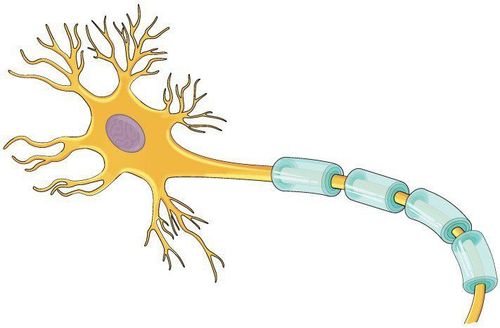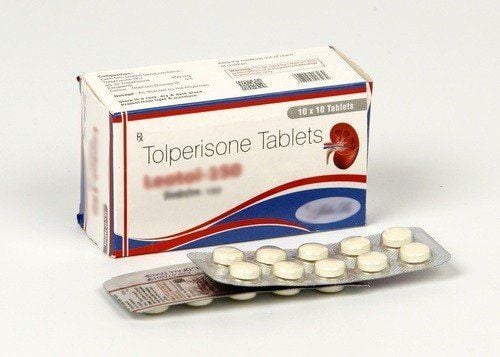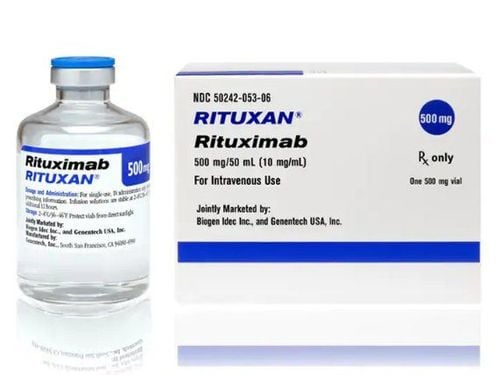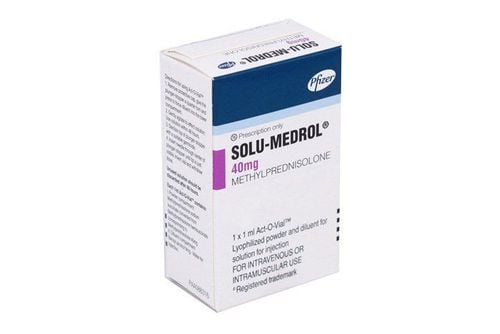This is an automatically translated article.
In most patients with multiple sclerosis, there is usually a period of months or years after the first episode of symptoms before new or old symptoms appear again. Finally, the recurrence and the symptoms do not go away completely, increasing the disability such as paralysis, spasticity, visual impairment.
1. What is multiple sclerosis?
Multiple sclerosis is considered an autoimmune inflammatory disease affecting myelin of the central nervous system. When the disease is active, components of the immune system, mainly cells called T cells, attack the myelin sheaths that surround nerve fibers in the brain and spinal cord. This leads to inflammation and causes vision-related problems, numbness, itching, muscle weakness, and other symptoms.
Causes of multiple sclerosis are:

Viêm xung quanh vỏ myelin có thể gây bệnh xơ cứng rải rác
Elements of the immune system attack the myelin sheaths that surround nerve fibers in the brain and spinal cord leading to inflammation. However, it remains unclear what triggers the immune system response in this case, whether it is a virus, or an environmental factor that triggers the immune system in some people with this genetic pattern. certain transmission. Inflammation around the myelin sheath causes the affected nerve fibers to stop working properly and causes symptoms. Once the inflammation goes away, the myelin sheath can heal and be repaired, and then the nerve fibers begin to function again. But inflammation, or repeated episodes of inflammation, can leave small sclerosis with permanent nerve fiber damage. Multiple sclerosis can cause many symptoms, but not all patients experience all of these symptoms. Symptoms may include:
Numbness, itching, a stinging sensation; Feeling dizzy causing you to lose your balance causing you to fall; Difficulty speaking or walking; Muscle weakness or spasms, which can cause you to fall or drop objects in your hand; Vision disturbances, painful eyes and strange eye movements; Problems with bowel or bladder control;

Bệnh xơ cứng rải rác có thể gây ra cảm giác chóng mặt dẫn đến mất thăng bằng khiến bạn ngã
Sexual problems; Sensitivity to heat; Difficulty concentrating.
2. How does multiple sclerosis progress?
When a patient has multiple sclerosis, the disease will tend to follow one of the following four forms:
Benign: There are only a few recurrences and often there are no symptoms for a long time. This is the least severe form of multiple sclerosis. Recurrence-remission pattern: Relapse is the period in which symptoms occur. During relapse, symptoms develop, which last for days from 2 to 6 weeks. Symptoms may then lessen or go away. After a while, the disease recurs on its own and may have new symptoms. After 5-15 years, some symptoms usually become permanent. Symptoms are usually caused by a buildup of scar tissue in the brain and damage to nerve fibers. The condition usually then slowly gets worse over time. Secondary progressive multiple sclerosis: Symptoms worsen. Many people with the relapsing-remitting form then develop the secondary progressive form of multiple sclerosis. Primary progressive form: Symptoms gradually get worse at the outset, and do not reverse. This is called primary progressive multiple sclerosis.
3. Complications of multiple sclerosis

Bệnh nhân bị xơ cứng rải rác có thể liệt của một số cơ do biến chứng của bệnh gây ra
In most patients, there is usually a period of months or years after the first episode of symptoms before new or old symptoms appear again. Eventually the recurrence and the symptoms do not go away completely increasing disability such as:
Paralysis: Weakness or paralysis of some muscles. Movement may be affected and there are problems with balance and coordination. Spasticity, ataxia of the extremities: You may have tremors or convulsions in certain muscles. This is usually due to damage to the nerves that control the muscles. Some muscles may contract vigorously and then may become stiffer and harder to use. Visual impairment: With multiple sclerosis, the patient may develop optic neuritis. It can cause pain behind the eye and can also cause partial loss of vision. More rarely, symptoms progress gradually from onset to disability at a relatively early stage. The disease cannot be definitively diagnosed unless the clinical picture shows damage to multiple parts of the central nervous system at different times. Some other complications: Urinary disorders, dizziness, erectile dysfunction, depression, fatigue. Transfusion of autologous hematopoietic stem cells can alleviate autoimmune reactions and long-term relapses of the disease. At Vinmec International General Hospital, patients with multiple sclerosis have been treated with autologous hematopoietic stem cell transplantation. Transfusion of autologous hematopoietic stem cells is an attempt to "reboot" the immune system, whose job it is to destroy damage to the brain and spinal cord in multiple sclerosis. For autologous stem cell infusion for multiple sclerosis, hematopoietic stem cells are taken from your body (autologous infusion) from your bone marrow or blood, selected and stored before being depleted. the immune system to the full extent of the chemical. The stored hematopoietic stem cells are then passed back to the body. The new stem cells travel down to the bone marrow and over time restore the immune system.
Please dial HOTLINE for more information or register for an appointment HERE. Download MyVinmec app to make appointments faster and to manage your bookings easily.
MORE
Multiple Sclerosis: What to Know What is Multiple Sclerosis (or Multiple Sclerosis)? Causes of multiple sclerosis (MS)













